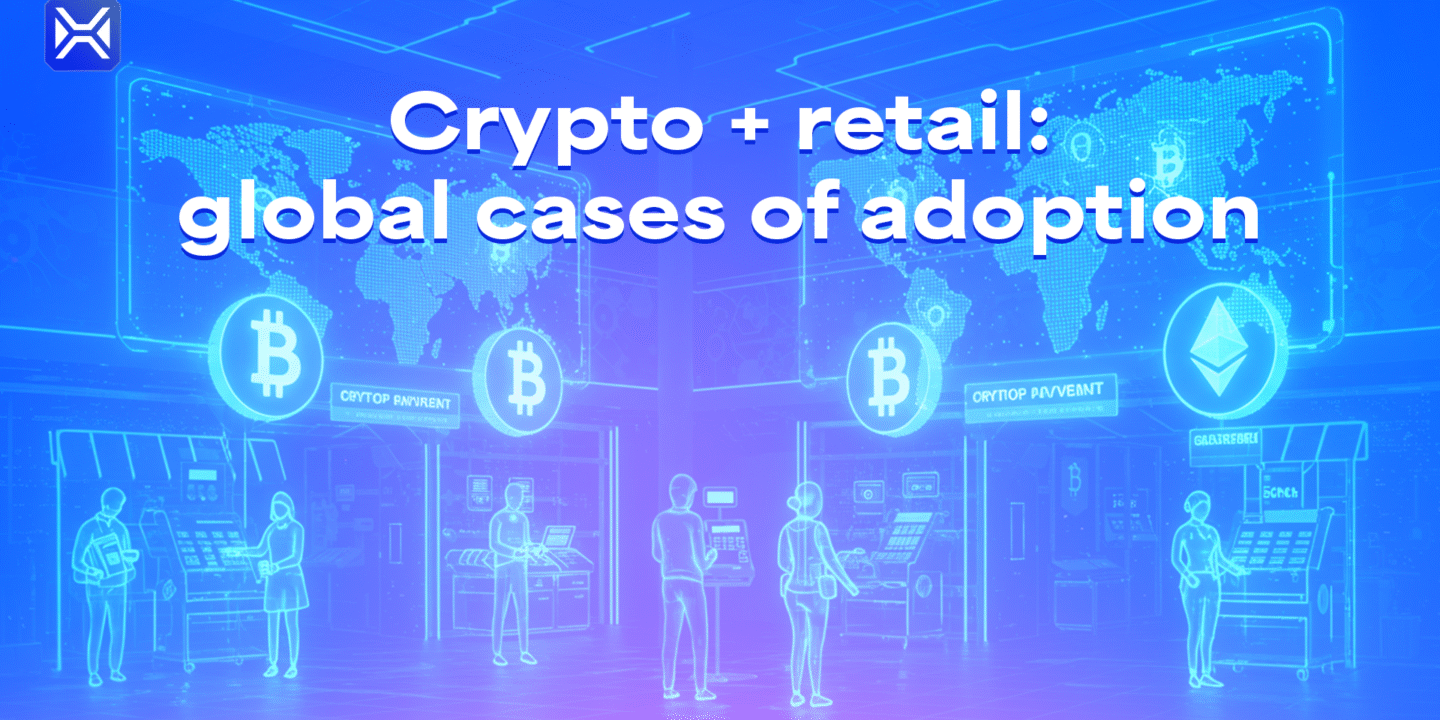
Cryptocurrencies have ceased to be exclusively speculative instruments and have become a
real means of payment. In 2025, the monthly volume of stablecoin transactions has reached
trillions of dollars, and the global adoption index from Chainalysis records consistent growth
of crypto payments in retail. Chainalysis also reports that North America alone has seen a
49% increase in crypto activity over the past year, with the volume of crypto payments in the
region exceeding $2.2 trillion. All this confirms: the future of Web3 is tied to the mass use of
cryptocurrencies for purchases and settlements, not just investments.

Global examples
PayPal: Pay with Crypto
On July 28, 2025, PayPal introduced the Pay with Crypto service, which allows U.S.
businesses to accept more than one hundred cryptocurrencies, including BTC, ETH, USDC,
and USDT. Merchants can instantly convert payments into fiat or stablecoins. The
commission is just 0.99% – almost half the cost of typical international card transactions. In
addition, there is an option to receive payouts in PYUSD, PayPal’s own stablecoin, which
reduces costs and simplifies international business operations.

Shopify and USDC
On June 12, 2025, Shopify announced a partnership with Coinbase and Stripe. Thanks to
this, merchants gained the ability to accept payments in USDC without complex integrations
and with minimal fees. Later, the Coinbase Base network was added to the project, allowing
Shopify stores to process USDC payments directly through Shopify Payments and Shop
Pay.
Starbucks through intermediaries
Starbucks was one of the first to test crypto payments. In 2021, the chain, together with the
Bakkt platform, launched the option to top up Starbucks gift cards with Bitcoin and
Ethereum. The Bakkt app was later shut down, and today Starbucks does not accept
cryptocurrency directly. However, this experience demonstrated interest in new payment
formats even in the mass consumer segment.
Walmart and Amazon
In July 2025, reports emerged that Walmart and Amazon are considering launching their
own digital currencies. Such stablecoins could reduce payment processing costs and lower
reliance on traditional payment systems. For now, these are only plans, but the very fact of
such discussions highlights the strategic interest of major retailers in crypto technologies.
Advantages of crypto payments for users
For customers, crypto payments mean speed, flexibility, and transparency. They operate
around the clock, are not tied to banking hours, and make it possible to avoid unnecessary
currency conversions in international purchases. Provider fees are typically fixed and
predictable. For example, when paying in USDC through Stripe, the fee is 1.5%. For
international clients, this is faster and more cost-efficient than bank transfers or card
payments.
Another key advantage is loyalty programs and cashback. Users receive part of the spent
amount back in the form of tokens or points, which they can use again. This approach turns
the act of payment into part of a rewards system and increases overall value for the
customer.
Advantages for businesses
For merchants, crypto payments are becoming a profitable tool. Fees are lower than with
cards, chargebacks are eliminated on the blockchain level, and the global audience of crypto
users already numbers in the hundreds of millions.
PayPal offers a 0.99% fee and payouts in PYUSD, Shopify provides instant conversion and
simple integration, while Visa and Mastercard are developing pilot projects for
blockchain-based settlements. All this reduces expenses and accelerates cash flow.
In addition, crypto payments make it possible to implement modern loyalty programs.
Discounts and bonuses in tokens are easy to automate and tie to specific customer actions.
This motivates customers to return and strengthens brand loyalty.
Sky Pay as a solution
Against this backdrop, Sky Pay is emerging, a payment system originally created to work
with cryptocurrencies. It automatically generates wallets with QR codes, supports APIs for
invoicing and integration with business systems, and displays transaction statuses in real
time. The service also handles technical details, such as automatically topping up user
wallets with gas fees so that payments don’t get stuck.
Special attention is paid to security: self-custodial wallets, private key protection, IP
whitelisting, and a notification system for payment statuses. Sky Pay is equally convenient
for small businesses, large retail chains, and fintech platforms.
The role of XSO in the ecosystem
At the core of Sky Pay is the XSO token, which drives usage of the platform. Customers
receive cashback and loyalty rewards, while merchants can implement their own incentive
programs that go beyond ordinary discounts. Each purchase becomes part of a long-term
customer-brand relationship.
The total supply of XSO is fixed at 1 trillion tokens, eliminating inflation. A public presale with
a 15% discount off the listing price gives early users the opportunity to join the ecosystem on
favorable terms.
Conclusion
Crypto payments are rapidly moving from the category of experiments into the realm of
standard financial instruments. The examples of PayPal, Shopify, and the pilot programs of
Visa and Mastercard show that the market is ready for mass adoption of digital assets in
retail. Even giants like Amazon and Walmart are considering launching their own
stablecoins, underscoring the strategic importance of this technology. Against this backdrop,
solutions like Sky Pay and the XSO token are becoming the link between users and
businesses: they provide convenience, security, and added value in the form of cashback
and loyalty programs. All this makes crypto payments not the future, but the present of
Web3.








No Comments